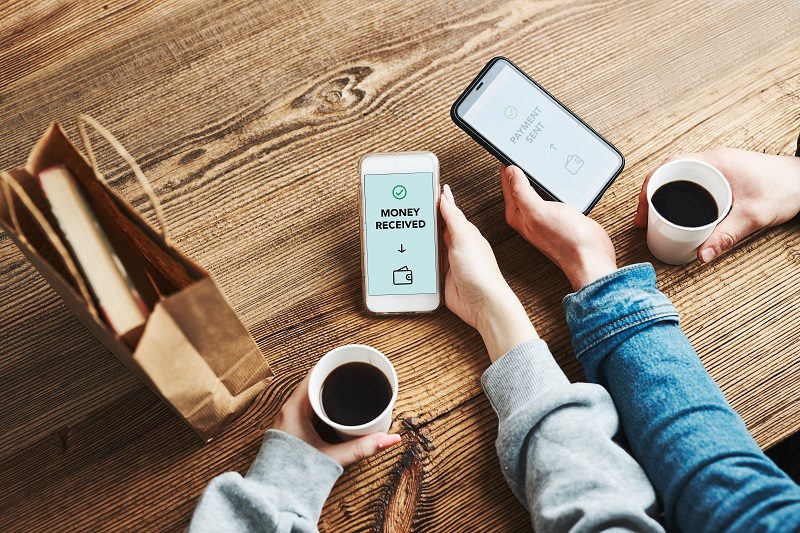With so many ways to make electronic payments, fewer and fewer people are carrying cash these days. But not having cash on hand can makes things difficult when you need to pay your babysitter or split the cost of a meal out with friends. The good news is that there are many ways to digitally send money to those you know and trust.
A P2P (or peer-to-peer) payment system allows you to send money from a computer or mobile device. These systems are available as standalone mobile apps that you can download, and they are commonly offered through your bank’s Online Banking platform as well. For example, Bank5 Connect allows customers to send and receive money with friends and family through its Zelle® service. Standalone P2P payment apps include options like Venmo, and Cash App.
Regardless of which P2P payment system you use, the steps are typically the same. You’ll log into the system and link it to your bank account. Once linked, you can quickly send or receive money while keeping the details of your bank account private. If using a system through your bank, like Zelle, you’ll typically only need the phone number or email address of the person you’re sending money to. With a standalone app, the recipient will typically need to have a profile on the app before they can receive funds from you.
While extremely convenient, there are some risks associated with P2P payment systems. Here are some tips to keep in mind when making P2P payments, so you can keep your bank account safe:
- Only send money to people you know and trust. Once you send money to someone via a P2P payment service, it’s very hard to get the money back unless the recipient willingly sends it back to you. For this reason, it’s extremely important to never send money to someone you don’t know. If you’re purchasing something online, use a credit card Instead. Credit cards offer the most protection when purchasing from an online vendor.
- Verify your recipient’s details before sending. As we’ve already discussed, it can be nearly impossible to get your money back after sending a P2P payment. Therefore, it’s crucial that you ensure you’re sending money to the correct person. Double check to make sure that their phone number, email address, or username is accurate before initiating a payment.
- Keep your transactions private. Some standalone P2P payment apps, like Venmo, allow you to publicize your transactions in a social media-type feed. Allowing strangers insight into your social circle and financial habits can put you at greater risk of phishing attempts.
- Be aware of P2P payment scams. In today’s digital world, it’s critical to always be on the lookout for financially motivated scams. As stated previously, you should never send money to someone you don’t know through a peer-to-peer payment platform. It’s also important to verify any requests from people you do know. Scammers can easily claim to be a friend or loved one, and they can make phony requests look pretty legitimate by spoofing email addresses or phone numbers. If you receive a request for money out of the blue, or something just doesn’t feel right with the communication, reach out to the sender using a number or email you know to be legitimate, so you can verify the request. You should also familiarize yourself with common peer-to-peer payment scams making the rounds.
Most consumers love the convenience that P2P payment services provide, and when used correctly they can be safer than many alternatives, such as sending a check or cash through the mail. However, when making peer-to-peer payments, it’s crucial to use sound judgement and protect yourself from scammers.
For more information on safe ways to use Bank5 Connect’s P2P payment service, Zelle, visit https://www.zellepay.com/safety-education/pay-it-safe.
